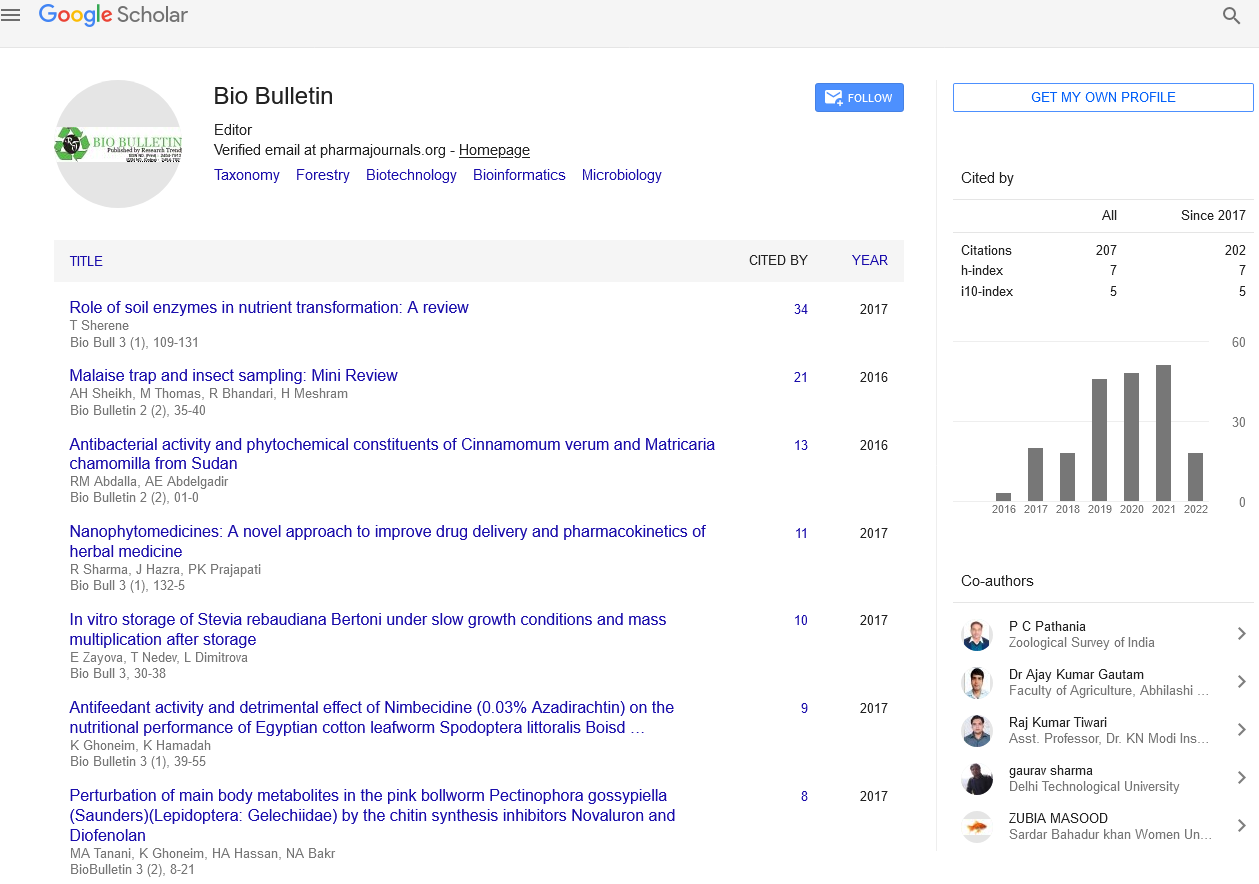Advances in Non-coding Ribonucleic Acids (RNAs)
Commentary - (2022) Volume 8, Issue 3
Description
Non-coding Ribonucleic Acids (RNAs) govern cell physiology and influence cellular functions, and vast majority of human RNA transcripts do not encode for proteins. A subcategory of them is engaged in gene regulation at many levels, ranging from epigenetic gene silencing to post-transcriptional mRNA stability regulation. Notably, the abnormal expression of numerous non-coding RNAs has been linked to severe diseases.
Rapid advances in network biology indicates that the robustness of cellular processes is the result of biological network properties such as scale-free degree distribution and hierarchical modularity, implying that regulatory network analysis could provide new insights into gene regulation and dysfunction mechanisms (Huang et al., 2005). The discovery and deployment of whole genome sequencing technologies has substantially expanded the understanding of long non-coding RNAs' capabilities (lncRNAs). LncRNAs are longer than 200 nucleotides in length and do not have the ability to code for proteins (Yu et al., 2012).
Epigenetics is the study of heritable changes in gene expression that do not entail changes to the DNA sequence. Researchers have discovered that epigenetic control plays a critical role in cell proliferation, differentiation, autoimmune disorders, and cancer throughout the last decade. The main epigenetic processes are the well-known occurrence of DNA methylation, histone changes, and regulation by non-coding RNAs, a mode of regulation that has only recently been found and is the subject of intense current researches (Santinon et al., 2016).
Although it is widely acknowledged that the vast majority of human transcripts are not translated, a significant proportion of them serve critical tasks. Non-coding RNAs are a type of RNA that does not encode functional proteins and is thought to only affect gene expression at the post-transcriptional stage. However, a wide range of recent research has revealed that miRNAs, piRNAs, endogenous siRNAs, and long non-coding RNAs are the most frequent regulatory RNAs, and there is emerging evidence that regulatory non-coding RNAs play a key role in epigenetic control (Gupta et al., 2010).
As a result, these non-coding RNAs (ncRNAs) feature the importance of RNA in gene expression control. Current research advances in order to acquire a better understanding of non-coding RNAs and their modes of action in cells, gaining a basic knowledge in non-coding RNAs feed back into an epigenetic regulatory network. Circular RNAs (circRNAs) are nonlinear lncRNAs with a distinct circular structure that are typically produced by back splicing of pre- mRNA. The circular shape provides resistance to cellular ribonuclease breakdown. CircRNAs have been demonstrated to behave as sponges for miRNAs, modulating their activity (Tumaneng et al., 2012).
Viruses, that have been discovered, also encode a collection of circRNAs. Some of these viral circRNAs are highly expressed and contribute to disease. It is also recognised that host circRNAs are involved in immune responses against viral infections. The future directions of research on circRNAs in host- virus interactions have to be implemented effectively. In the recent times of pandemic caused by an RNA virus, considering all elements of viral transcript synthesis is more critical than ever.
Conclusion
Finally, a comprehensive overview of vascular smooth muscle cell RNA biology, highlighting the most recent discoveries in the fields of lncRNAs and circRNAs, with the goal of identifying key molecular players in search to prevent neointimal hyperplasia in vascular disease has been mentioned. Noncoding RNA has emerged as a burning topic in modern genetics research, particularly as a new mechanism of epigenetic regulation. However, scientists currently have only a hazy knowledge of the methods through which non-coding RNAs control gene expression. Initially, piRNAs, miRNAs, and siRNAs were considered to function separately, which was supported by the clear disparities between them.
References
Huang J, Wu S, Barrera J, Matthews K, Pan D. The Hippo signaling pathway coordinately regulates cell proliferation and apoptosis by inactivating Yorkie, the Drosophila homolog of YAP. Cell. 2005;122:421-434. [Crossref], [Googlescholar], [Pubmed]
Yu FX, Zhao B, Panupinthu N, Jewell JL, Lian I, Wang LH, et al. Regulation of the Hippo-YAP pathway by G-protein-coupled receptor signaling. Cell. 2012;150:780-791. [Crossref], [Googlescholar], [Pubmed]
Santinon G, Pocaterra A, Dupont S. Control of YAP/TAZ activity by metabolic and nutrient-sensing pathways. Trends Cell Biol. 2016;26:289-299. [Crossref], [Googlescholar], [Pubmed]
Gupta RA, Shah N, Wang KC, Kim J, Horlings HM, Wong DJ, et al. Long non-coding RNA HOTAIR reprograms chromatin state to promote cancer metastasis. Nature. 2010;464:1071-1076. [Crossref], [Googlescholar], [Pubmed]
Tumaneng K, Schlegelmilch K, Russell RC, Yimlamai D, Basnet H, Mahadevan N, et al. YAP mediates crosstalk between the Hippo and PI(3)K-TOR pathways by suppressing PTEN via miR-29. Nat Cell Biol. 2012;14:1322-329. [Crossref], [Googlescholar], [Pubmed]
Author Info
Sonja Kretz*Citation: Kretz S (2022) Advances in Non-Coding Ribonucleic Acids (Rnas). Bio Bulletin, 8(3): 09-10.
Received: 23-Aug-2022, Manuscript No. BIOBULLETIN-22-77664; , Pre QC No. BIOBULLETIN-22-77664(PQ); Editor assigned: 26-Aug-2022, Pre QC No. BIOBULLETIN-22-77664(PQ); Reviewed: 09-Sep-2022, QC No. BIOBULLETIN-22-77664; Revised: 16-Sep-2022, Manuscript No. BIOBULLETIN-22-77664(R); Published: 23-Sep-2022, DOI: 10.35248/2454-7913.22.8.102
Copyright: This is an open access article distributed under the terms of the Creative Commons Attribution License, which permits unrestricted use, distribution, and reproduction in any medium, provided the original work is properly cited.

